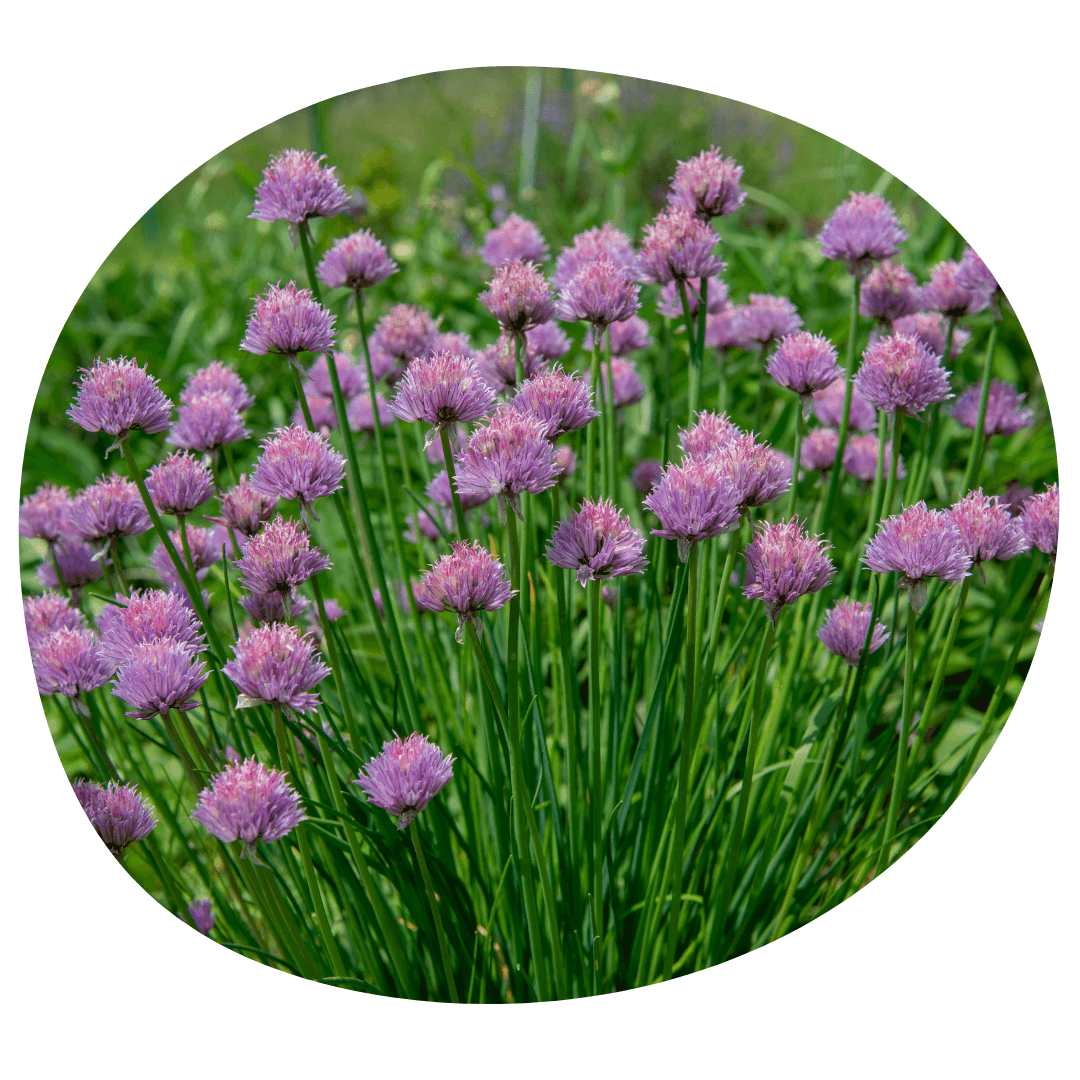How to Grow Chives
Growing Conditions
Chives are a wonderful perennial herb that produce flavourful stalks and edible flowers which are a favourite of pollinators. They are cold-tolerant and grow most successfully in the spring and fall. They grow best in full sun but can tolerate some shade, and require moist but well-draining soil. Chives aren't needy and will spread prolifically if allowed to go to seed in the fall.
Starting
Direct sow chive seeds as soon as the soil is workable in the spring. While they are cold tolerant, they will have the best germination when soil temperatures are 15-20°C. They may also be started early indoors 6-8 weeks before the last frost and transplanted out after the risk of frost has passed. Sow your seeds about 1/4“ deep, and thin to 4" apart after sprouts have emerged. Keep soil moist.
Find our full guide to seed starting here.

Care
Chives are low maintenance once established. While they are tolerant of some drought, they should be watered consistently during dry periods and will benefit from mulch to keep moisture in the soil. Mulch will also help deter weeds, which can be difficult to distinguish from young plants. Add a high nitrogen fertilizer if needed during the spring, especially if stalks begin to yellow. Cut back flowers after they emerge to prevent the plants from going to seed and spreading through your garden. Plants should be divided every few years in the spring to maintain high production.
Pests and Diseases
Onion Maggots - Tiny white worms that burrow into and feed on onion bulbs, destroying the bulb and causing foliage to wilt and yellow.
Thrips - Tiny winged insects that leave patches of discolouration on leaves.
Powdery Mildew - White mildew on the top surfaces of leaves, starting as small spots and growing to cover the entire leaf.
Crop rotation, garden cleaning, and proper spacing between plants are the best ways to prevent problems caused by pests and diseases. Diatomaceous earth can be used to control crawling pest species, while sticky traps will catch flying pests. Row covers and insect netting can also prevent travelling pests from landing on your crops and causing damage. Ensure good drainage in your chosen planting spot to prevent problems with fungus and rot. Contact us for more specialized pest control methods such as beneficial nematodes.
Harvest
Chives should be ready to harvest around 60 days after sowing, once plants have grown to around 12" high. Cut the green stalks at the base, around 1" above the soil. Fresh chives can be eaten immediately or stored in the fridge for a few days.

